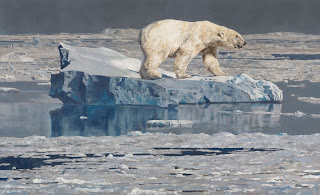Rarely does an artist not have an opinion on how many colors there should be in an effective palette.
I've heard that you aren't a master artist unless you have an extremely limited palette. On the other hand, I have seen paintings which thrilled me and they were created with an expansive palette.
When does a limited palette become a mastery of colors and not a straight-jacket?
When does a huge palette become freedom and not a crutch?
I am not the person to answer these questions for another artist. However, I would like to share some thoughts on how I have, am, and probably will approach this topic.
To give you my starting point, below is my standard palette of Rembrandt oil paints.
Titanium white
Cadmium red deep
Cadmium yellow deep, naples yellow, yellow ochre
Sap green
Cerulean blue, ultramarine blue deep, paynes gray
Raw sienna, burnt sienna, raw umber, burnt umber, VanDyke brown
Note: for some reason I ended up with 5 browns. It wasn't a conscious effort on my part but each seemed to fill a need.
I don't consider this an extremely limited palette but neither is it huge. There are other Rembrandt colors in my arsenal, but the above are the ones I usually use.
With my influx of new colors from Michael Harding and Richeson, I have the chance to do some free exploration. As I mentioned on a previous blog, most of the colors I ordered were in the reds, yellows, and blues. However, some paints really intrigued me and I added those too.
For this next painting, I grabbed one of the Richeson oil paints, manganese violet. When I included this color in my order, I had no idea what it would be like. Even as I put it on my palette, I did not know its character. It is a dark color so I added some titanium white to see more of its flavor. Interesting. Too bright in this application, but if I have only a tiny hint of white, a bit of raw umber, paynes gray, and maybe some van dyke brown, it will be the perfect color for the background foliage.
Could I have mixed this purple-y color from my basic palette? Yes.
Would I have mixed it? Probably not. I just did not see this color in my head when I started the painting, but I think my painting will be more dynamic with its inclusion.
If I can use these new colors to push my color perception and inventiveness, it will be a worthwhile exploration indeed.











